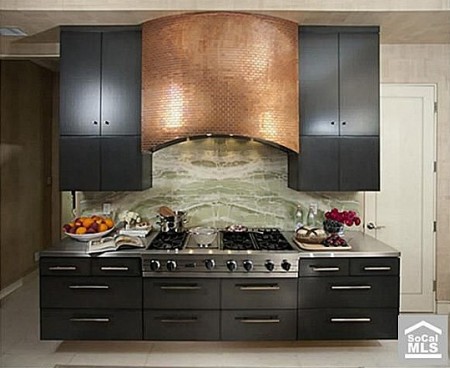At the turn of the 20th century, cooking was no easy task. Without electricity or running water in many homes, cooking a meal involved hovering over a wood or coal-powered stove. It was hot, hard and a sketchy proposition, since the heat levels and consistency were often unreliable.
Although the first electric range was invented in 1910, the appliance remained unreliable even through the 1940s. Even into the 1970s, convection ovens were not ubiquitous in American kitchens but instead an option for only the most serious home chefs.
Today, for anyone who wants to do anything from boil water to prepare a 10-course meal worthy of a James Beard nomination, the home cook has far more choices. A cook can update his or her kitchen with restaurant-grade appliances that combine the power of gas and the accuracy of electricity. High-end homes for sale boast stainless steel appliances, two ovens and a range hood to whisk away any odors or fumes.
The future of ovens and stoves
While we’ve come a long way in the past 100 years in stove technology, the newest trends make simmering and searing easy for even the most amateur of cooks. While most stoves in new homes are stainless steel, have gas and convection options as well as at least one high-temp burner, there are quite a few new options for chefs coming down the pipeline.
Cooking Flexibility:
Forget the four-burner cooktops of old. Many new high-end stoves have six burners in various sizes and cooking strengths. Models include a low-heat burner for simmering and another for searing at high-heat. Some burners may be developed for the stir-fry devotee with a burner designed for a wok. Pancake lovers can get burners that connect using a “bridge” element to heat a large griddle or pan. Are you a crockpot user? Some stoves are now offering a slow-cooker element so you can whittle down one more appliance from your countertop.
Keep it Cool:
One of the biggest advancements in technology and manufacturing of home appliances has been the addition of a cooling element to ovens. Busy cooks can pop a roast in the oven in the morning and have it stay cold until the pre-programmed cooking time. Once the dish is done cooking and has been warmed for an hour, it reverts back to refrigeration to keep the item fresh.
Trivection Ovens:
Some high-end stoves have dual gas and electric cooking options, but the newest trend is trivection cooking which combines thermal, convection and microwave energy that dramatically shortens cooking time. In some cases, baking can be finished five times faster than in a regular oven. While you may be able to bake a casserole faster, it doesn’t come cheap; a basic trivection oven starts at $2,000.
Back to the Flame:
Despite the progression of microwaves and convection cooking, there’s something to be said about a wood-fired pizza or smoked salmon. These yearnings help explain a movement toward cooking over an open flame. Masonry stoves are a heat storage fireplace that burns firewood and retains the heat for cooking. Developed hundreds of years ago and still popular in Europe, there are several online resources for homeowners to purchase and build their own masonry stove.
Send questions/comments to the editors.



Success. Please wait for the page to reload. If the page does not reload within 5 seconds, please refresh the page.
Enter your email and password to access comments.
Hi, to comment on stories you must . This profile is in addition to your subscription and website login.
Already have a commenting profile? .
Invalid username/password.
Please check your email to confirm and complete your registration.
Only subscribers are eligible to post comments. Please subscribe or login first for digital access. Here’s why.
Use the form below to reset your password. When you've submitted your account email, we will send an email with a reset code.